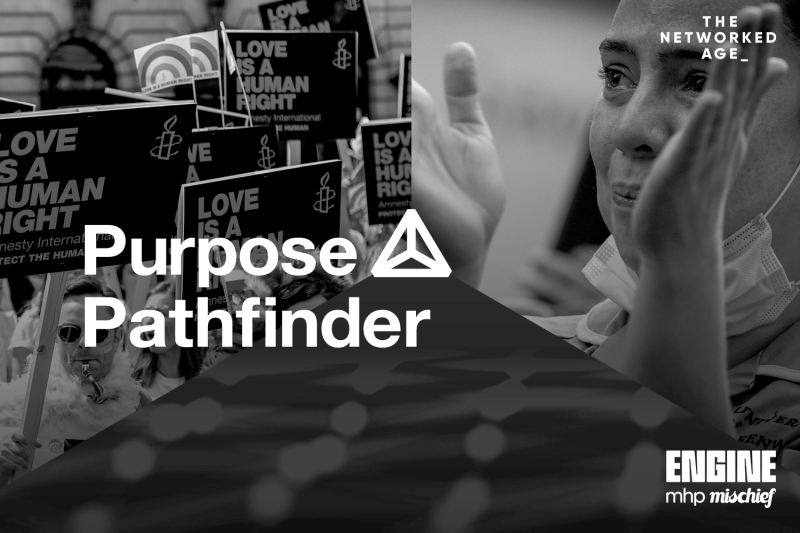
Since we first launched our Networked Age model in 2018, we’ve been studying the rise of tribalism as a force that shapes the way people relate to the world and each other. Groups and networks are forming around shared values and beliefs.
In a tribal world, brands have two choices: become part of a tribe or form their own. Either way you turn, a clear statement of who you are as a business, why you exist and your contribution to society is key. A clearly-articulated brand purpose is not just a differentiator, it’s now something that many customers, investors and employees expect.
However, as society becomes more polarised, identity binds people within tribes more strongly and that makes finding common ground harder. In that respect, purpose has the ability to create brand detractors as well as advocates.
The stakes, therefore, are high: get your story wrong and you can lose customers and damage your most important relationships – but get it right and you can build loyalty and engage new audiences. This is a challenge that demands real audience insight, not just professional instincts.
Building on our work with The Depolarization Project, The University of Cambridge, YouGov and More in Common, we have developed a unique new model. The Purpose Pathfinder will help our clients design brand purpose narratives that resonate with their audiences in the strongest possible way, while also balancing the polarised views of different audiences. The model sets our three narrative routes available to brands:
· Change: Fight injustice and take a stand on one side of an argument. Change narratives are adopted by brands including Patagonia, and encourage polarisation.
· Community: Taking care of people and the world around you, bringing everyone together. Community narratives are used by the likes of John Lewis, and encourage depolarisation.
· Utility: Focus on personal flourishing and helping customers live their best lives, such as Porsche does with its high-performance engineering. Utility narratives sidestep social issues and focus on the individual.
The Pathfinder gives brands a score against these three routes and compares it to the expectations that audiences have of the businesses they buy from. This means we can identify where the biggest gaps exist and create narratives and campaigns to fix them.
It means brand leaders and communicators can understand their audiences’ competing expectations, anticipate risks, and build on the aspects of their story that will have the greatest impact. The model will also help businesses who are in the full glare of the public spotlight on contentious topics, by providing useful guidance to inform reactive communications strategies.
